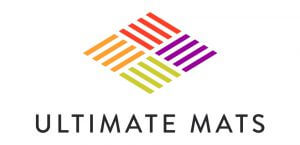
What Are Brand Assets?
Brand assets are the visual, verbal, and experiential elements that distinguish a brand’s identity from that of its competitors.
At the heart of a successful brand strategy are assets that not only make a brand recognizable but also foster a deeper connection with its audience.
In this article, you will learn:
- The definition and examples of brand assets.
- The various types of brand assets and their roles.
- How brand assets contribute to a brand’s success.
- Why is a custom logo mat a great way to make the most of your brand asset?
What Are Brand Assets?
Brand assets are the tangible and intangible elements that contribute to the identity and value of a brand.
They are unique features that set a brand apart in a crowded marketplace, making it easily recognizable and memorable to consumers.
These assets can range from visual elements like logos and color schemes to verbal components such as slogans and jingles, extending even to experiential aspects like customer service and the retail environment.
At their core, brand assets serve a dual purpose: they not only encapsulate the brand’s essence, making it distinct but also create an emotional connection with the audience, fostering loyalty and trust.
For example, Apple’s minimalist logo and innovative product design are critical brand assets that reflect its commitment to simplicity and innovation, distinguishing it in the technology sector.
Common brand assets include:
- Logos and wordmarks that provide immediate brand recognition
- Color schemes that evoke specific emotions or values
- Slogans and taglines that summarize a brand’s promise or value proposition
- Jingles and sounds that become synonymous with the brand
- Packaging design that stands out on shelves
- Websites and social media profiles that engage and inform customers
- Trademarks and patents that protect unique products or services
Understanding and strategically developing these assets are critical steps in building a robust and coherent brand identity that resonates with consumers and withstands the test of time.
Types of Brand Assets
Brand assets are the building blocks of a brand’s identity, encompassing a wide range of elements that work together to create a cohesive and recognizable image. These assets can be classified into several types, each playing a crucial role in branding and marketing strategies.
Visual Assets: The most immediate and impactful brand assets are often visual. Logos, color schemes, and typefaces make a brand instantly recognizable. For instance, Coca-Cola’s distinct red and white color palette or Nike’s swoosh logo are iconic visual assets that require no introduction.
Digital Assets: A brand’s online presence is paramount in today’s digital-first world. Websites, social media profiles, and digital content like blogs and videos from the digital assets of a brand. They not only serve as platforms for engagement but also as mediums to convey the brand’s message and values.
Physical Assets: Physical assets include packaging, business cards, uniforms, and signage. They extend the brand’s presence into the physical world, providing tangible touchpoints for customers. Packaging, especially, plays a vital role in brand recognition and can influence purchasing decisions.
Intellectual Assets: These include trademarks, copyrights, patents, and proprietary technologies. Intellectual assets protect a brand’s unique products, services, and ideas, ensuring a competitive advantage in the market.
Creating a robust portfolio of brand assets across these categories enables a company to build a strong, multifaceted brand identity. Each asset type contributes to a comprehensive brand experience, ensuring consistency across all customer interactions and touchpoints.
Importance of Brand Assets in Branding Strategy
Brand assets are not just symbols of identity; they are strategic tools that can significantly impact a brand’s market positioning and customer perception.
Their importance in a branding strategy can be seen through several lenses:
Building Brand Recognition and Recall: Consistent use of visual and verbal assets makes a brand easily recognizable, helping it stand out in a crowded marketplace. A strong logo or color scheme, like McDonald’s golden arches or Tiffany’s robin egg blue, can be identified at a glance, enhancing brand recall among consumers.
Differentiating the Brand from Competitors: In industries where products and services are often similar, brand assets become critical differentiators. They communicate a brand’s unique value proposition and personality, helping consumers choose one brand over another. Apple’s emphasis on design and user experience, communicated through its sleek product aesthetics and intuitive interfaces, sets it apart in the tech industry.
Fostering Brand Loyalty and Trust: Brand assets that resonate with consumers on an emotional level can foster loyalty and trust. This emotional connection is built over time through consistent and positive brand experiences, reinforced by familiar and comforting brand assets. For example, the Starbucks logo is not just a symbol of coffee but of a consistent, quality experience that customers trust and return to.
Supporting Brand Evolution: As markets and consumer preferences change, brand assets can be adapted to keep the brand relevant and appealing. This evolution, when done carefully, allows brands to remain modern and engaging without losing their recognizability or core identity. Google’s logo evolution is an example of how brands can update their visual assets to reflect a more modern aesthetic while maintaining brand recognition.
In essence, brand assets play a pivotal role in the strategic positioning and long-term success of a brand. They are much more than mere identifiers; they are bearers of the brand’s story, values, and promise to its customers.
How to Create and Manage Effective Brand Assets
Creating and managing brand assets is a strategic process that involves a deep understanding of the brand’s identity, audience, and market position. Here’s how businesses can approach this task to ensure their brand assets contribute effectively to their branding strategy:
Identifying Your Brand’s Unique Value Proposition: Start by defining what makes your brand unique. This could be your product quality, customer service, innovation, or company values. Understanding your unique value proposition is crucial for creating brand assets that accurately represent and communicate your brand’s strengths and differentiation.
Designing Memorable and Versatile Brand Assets: Design brand assets that are not only memorable but also versatile enough to be used across various platforms and mediums. A logo, for instance, should be recognizable whether it’s on a billboard or a business card. It should also be adaptable to digital platforms without losing its essence. This requires thoughtful design choices regarding colors, typography, and scalability.
Consistently Applying and Evolving Brand Assets Over Time: Consistency is key in brand asset management. Ensure that all your brand assets are used consistently across all customer touchpoints. This creates a cohesive brand experience that reinforces brand recognition and loyalty. However, don’t shy away from evolving your brand assets to keep up with changing market trends and customer preferences. The challenge is to do so without diluting the brand identity you’ve worked hard to establish.
Legal Protection and Trademarking: Protecting your brand assets through trademarks is crucial to prevent imitation and misuse. This legal protection ensures that your brand assets remain unique to your brand and contributes to building strong brand equity.
Monitoring and Measuring Impact: Regularly monitor how your brand assets are performing in terms of brand recognition, recall, and customer perception. This can involve customer surveys, market research, and analyzing marketing campaign performances. Based on these insights, refine and adjust your brand assets as needed to ensure they continue to support your brand’s goals effectively.
Creating and managing effective brand assets is a dynamic, ongoing process that plays a critical role in a brand’s success. By carefully designing, protecting, and evolving these assets, businesses can build a strong, recognizable brand that resonates with consumers and stands the test of time.
Leveraging Brand Assets to Enhance Brand Equity
Brand equity is the value and strength of a brand that stems from consumers’ perception, experiences, and associations with the brand. Leveraging brand assets effectively is key to enhancing this equity, as these assets are tangible manifestations of the brand’s identity and values.
Here’s how businesses can use their brand assets to boost brand equity:
Strategies for Integrating Brand Assets Across All Touchpoints: Ensure that your brand assets are consistently used across all customer touchpoints, from your website and social media to your physical stores and packaging. This consistent application reinforces brand recognition, strengthens brand associations, and builds a cohesive brand experience. For instance, using the same color scheme and logo style on your website, in your retail stores, and on your product packaging creates a unified brand identity that customers will remember and trust.
Measuring the Impact of Brand Assets on Brand Equity and Customer Perception: To understand how your brand assets are contributing to your brand equity, regularly measure customer perception, brand recognition, and loyalty. This can be done through surveys, focus groups, and analyzing customer feedback on various platforms. By tracking these metrics over time, you can gauge the effectiveness of your brand assets and make informed decisions about potential adjustments or updates.
Case Studies of Successful Brand Asset Management: Analyzing successful brands can provide valuable insights into effective brand asset management. For example, look at how Apple’s consistent use of minimalist design and innovative technology across its product range and marketing materials has built a strong brand equity. Similarly, Coca-Cola’s consistent messaging around happiness and togetherness, along with its iconic logo and red-and-white color scheme, has made it one of the most recognizable and valuable brands in the world.
By thoughtfully leveraging their brand assets, businesses can significantly enhance their brand equity. This involves not just the consistent application of these assets but also regularly evaluating their impact and making strategic adjustments to stay aligned with evolving market conditions and consumer preferences.
Where a Custom Logo Mat Fits In
As you’re reading this, you might be wondering where a logo mat comes into this.
A logo mat is a physical asset where your distinctive brand asset (your logo) can be displayed.
People look down as they enter a building to wipe their feet on the door mat. This is a hugely untapped area for showcasing and reinforcing your logo in the minds of those visiting your premises.
Think about this logically.
If someone looks down as they are wiping their feet, they see your logo.
Now, this also does something that speaks volumes about your business.
This is called ‘costly signaling.’ It’s a statement that you care enough about your brand and have the financial resources even to have your logo visible under your feet.
But much more than this. A large logo mat with your brand displayed makes a significant impact on the entrance of your business.
And if you’d like one for your business, check out our full range.
Conclusion
Brand assets are the cornerstone of a brand’s identity, playing a crucial role in making a brand recognizable, differentiable, and memorable. Throughout this article, we’ve explored the essence of brand assets, delving into their various types and the pivotal role they play in a branding strategy. We’ve seen how these assets are not just visual identifiers but strategic tools that can enhance brand equity, foster customer loyalty, and differentiate a brand in a competitive marketplace.
To recap, the three most important takeaways are:
- Brand assets encompass a wide range of elements, from logos and color schemes to intellectual property, all serving to establish a brand’s unique identity.
- Effective management and consistent application of these assets across all touchpoints are key to building strong brand recognition and equity.
- Leveraging brand assets strategically can significantly enhance a brand’s value and its connection with customers.
As you evaluate and refine your own brand’s assets, consider the next steps in bolstering your brand’s presence and equity. A great starting point would be to conduct a comprehensive audit of your current brand assets, assessing their consistency, impact, and alignment with your brand’s core values and identity.
David Chapman, founder of Ultimate Mats.
